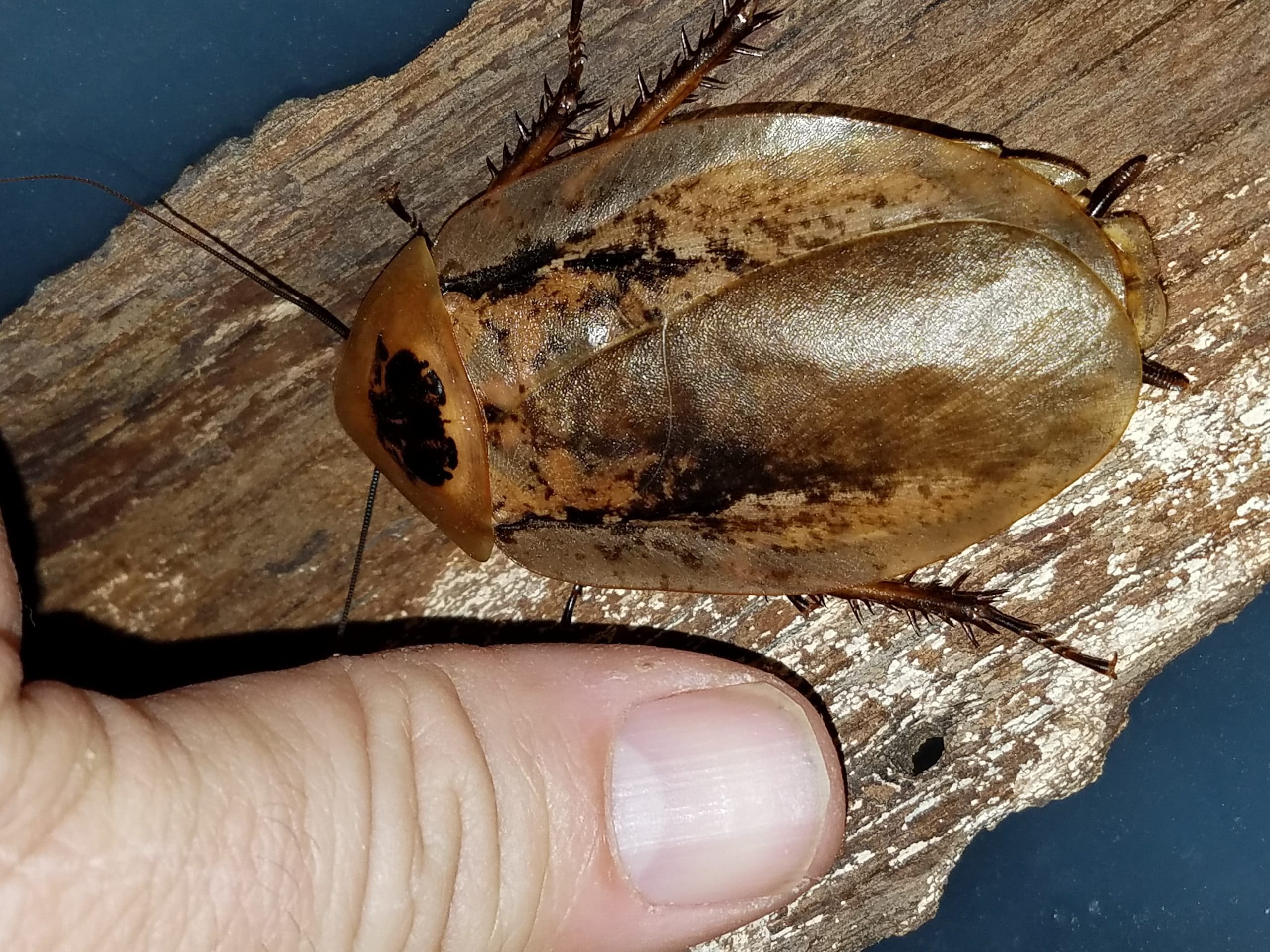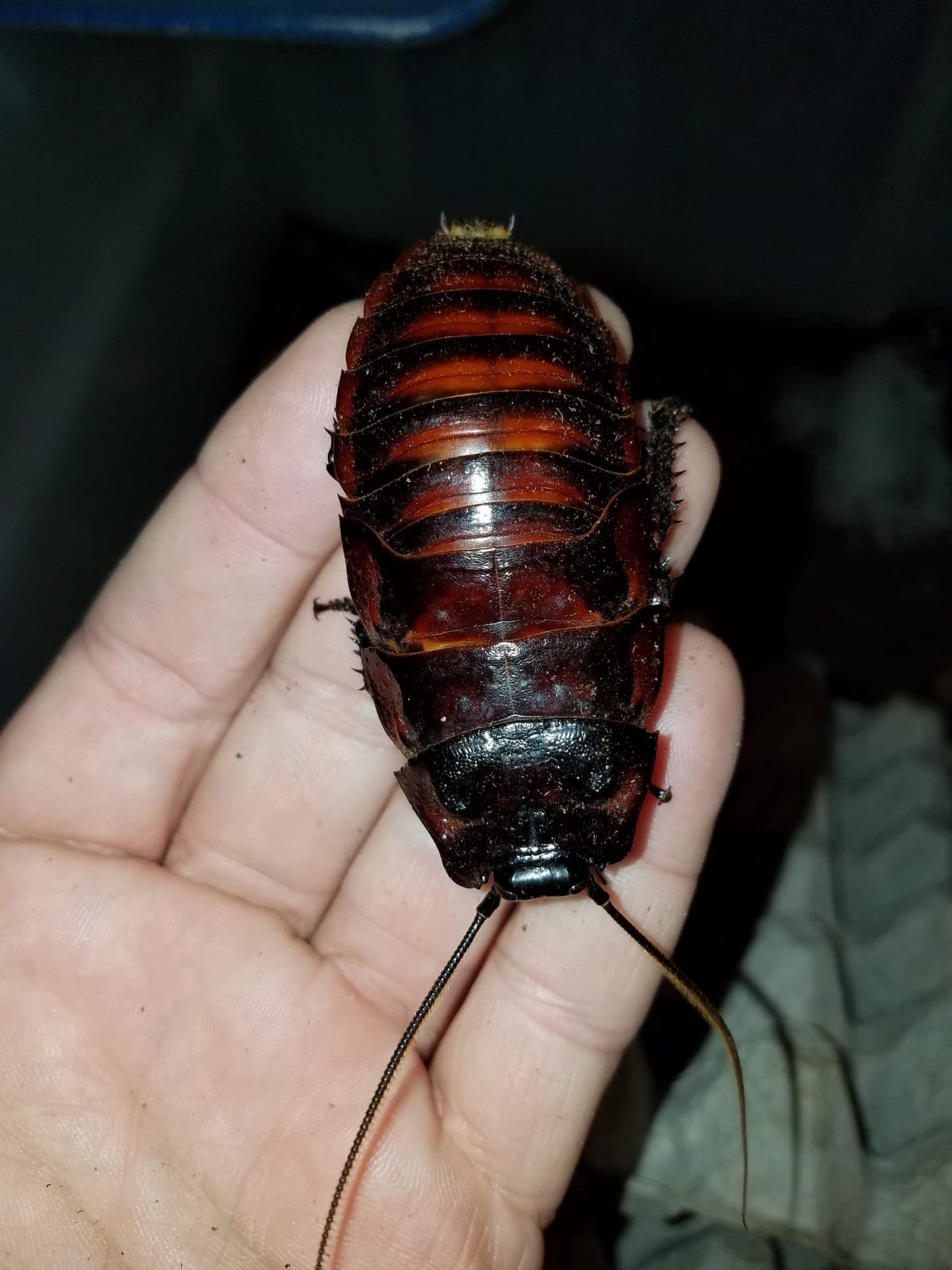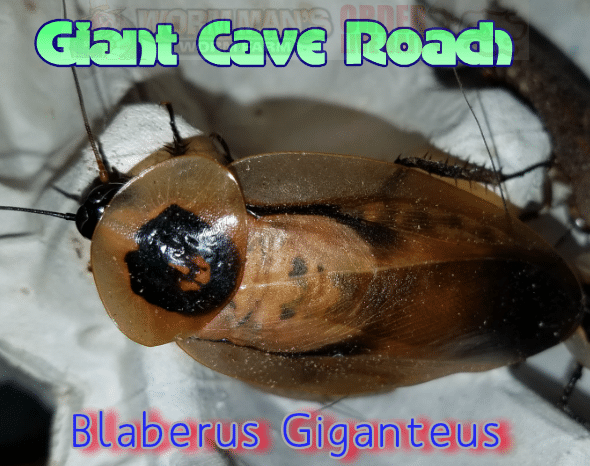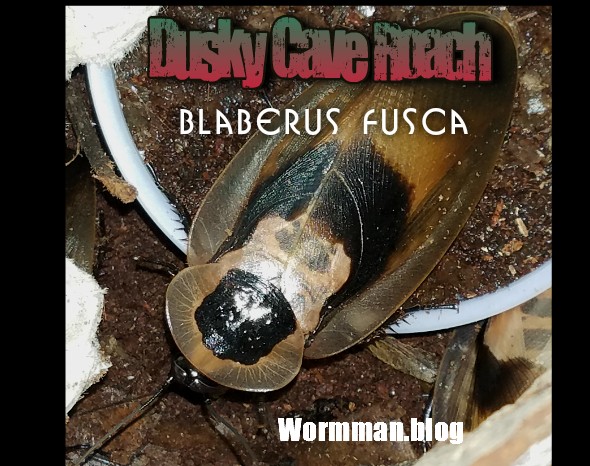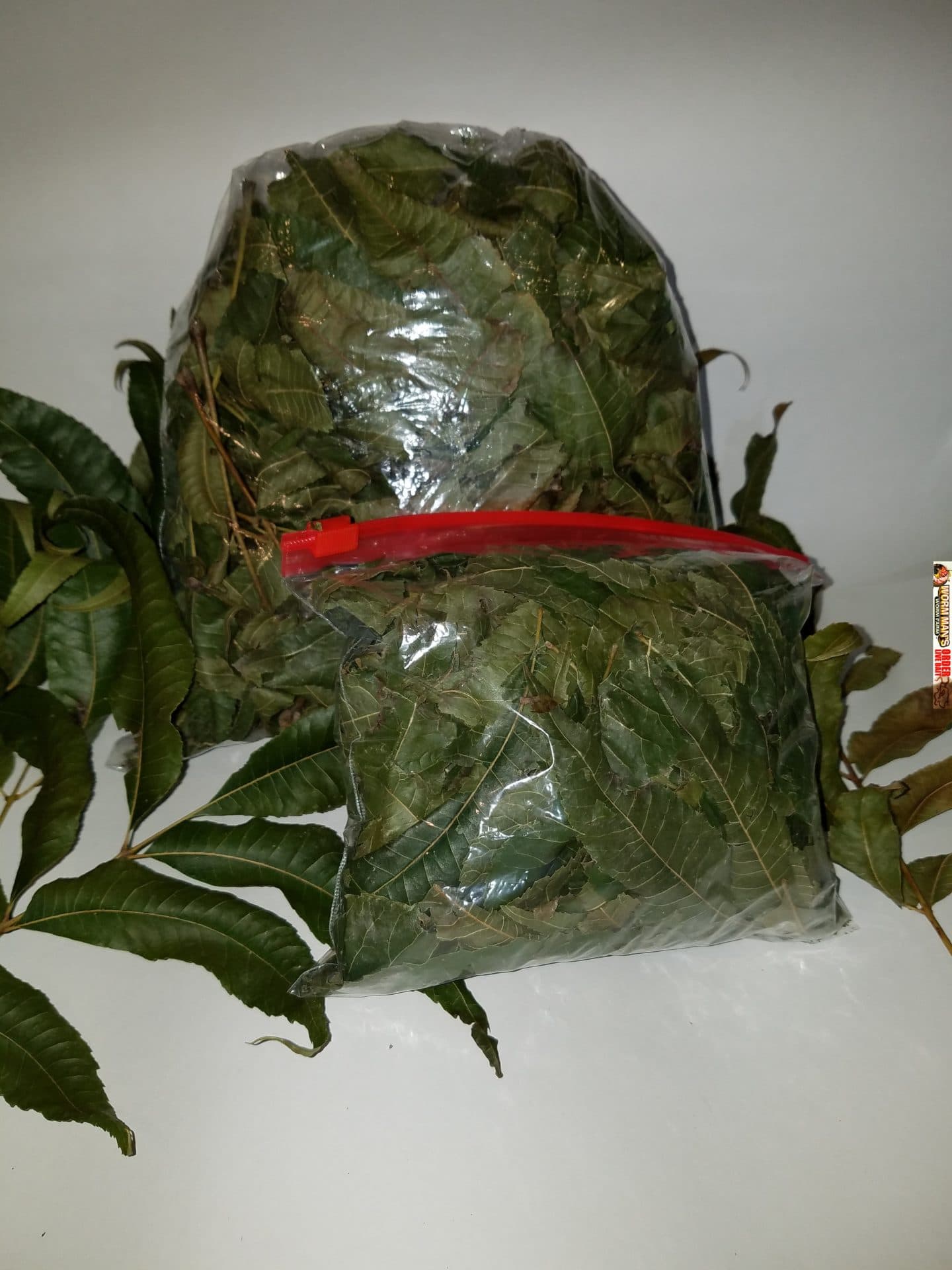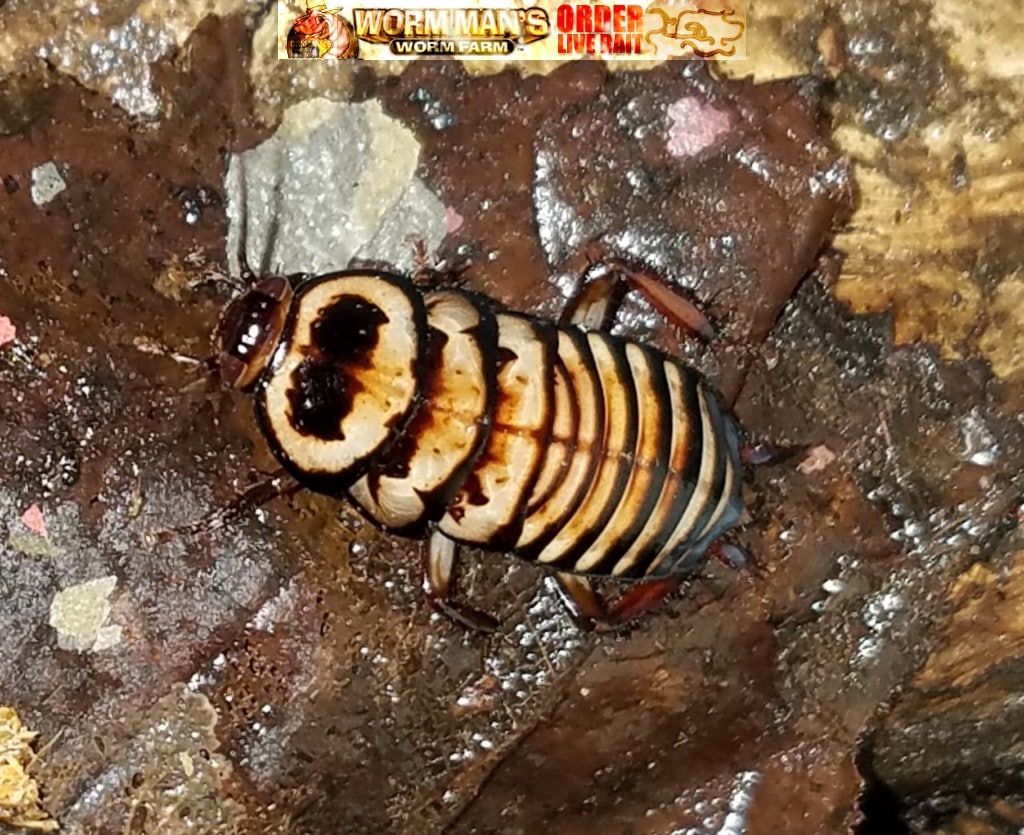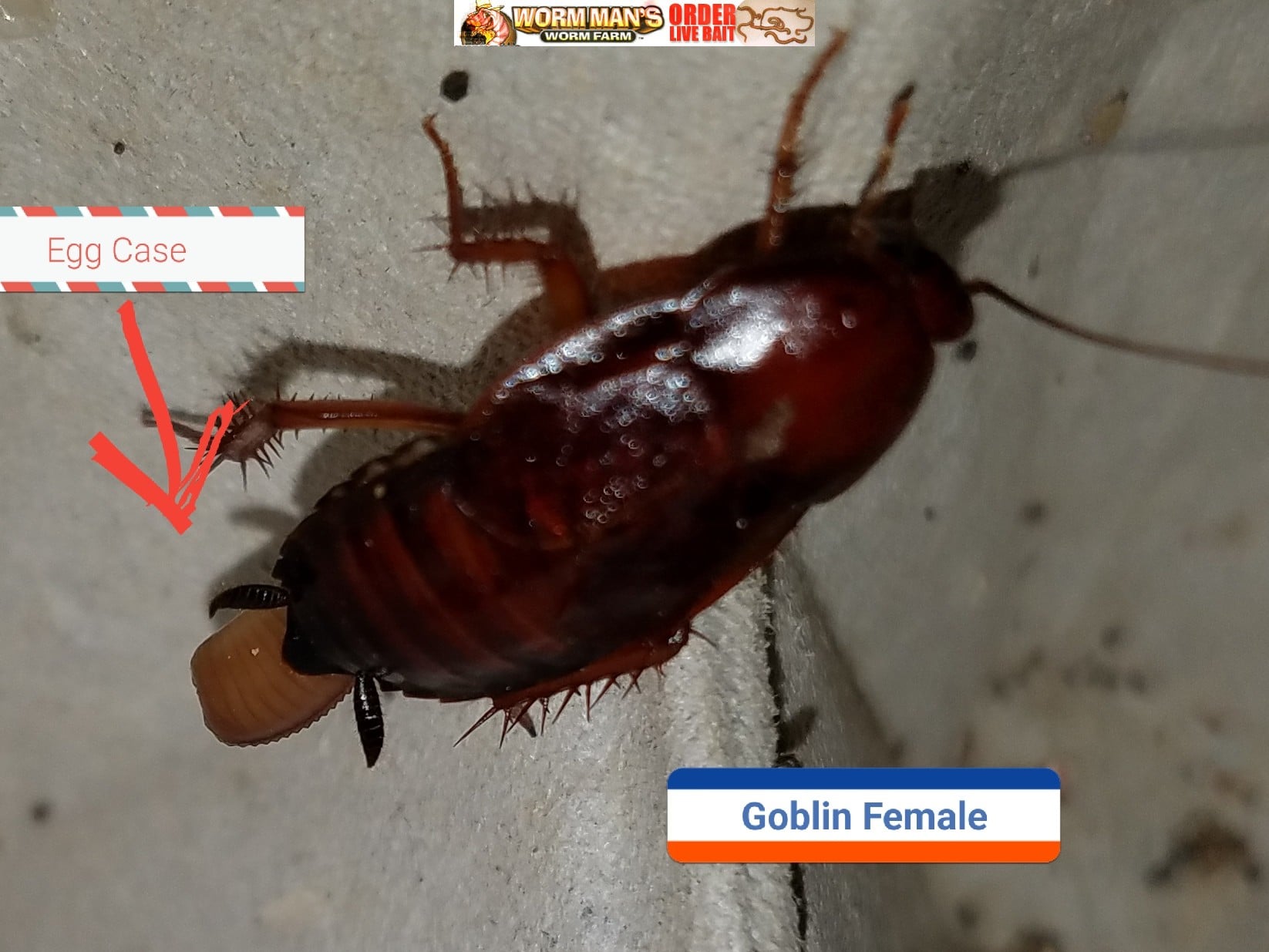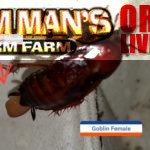
Live Roaches
We have expanded our selection of isopods, adding Asian and Spanish Isopods to our farm. We have also added many new rare, large and feeder roaches to our breeder groups. Millipedes have also joined our farm and are happily breeding as I write this. Pillipedes are my favorite.

In all, we have 68 types of roaches, 54 types of Isopods and 8 types of Millipedes.
To accomplish this, we had to add a small building for our live roaches. It is still being organized but it is heated with 3 types of heat, electric, propane and oil, so that we have backup systems in the event of a storm or power failure.
We also hooked up a warning system that calls, emails and texts me when the temp and humidity levels fall below the perfect habitable zone for live roaches. If you want to know more about that, just comment below or send me a message.
Here is a shot of the roach building. The plants in the middle are Peace Lilies, which are great for removing ammonia from the air. We will be getting more of these for this building and some of our other buildings.

I will list our list of species below. I will do that because we are always looking for more. If you have something, not on the list, please contact us with what you have with a price. You can do that by clicking on the contact form on the left menu of this site.
The red highlighted names indicate that we are looking for more, even though we have active breeding colonies. Most of these are not yet for sale but they will be coming online over the next few months so stop back in or join our mailing list to get informed as new species are added.
If you do not see it listed, that means that we do not have it and that we may want to buy what you have. Send us what you have here.
Thank you!!
Ken
ROACHES
| Roach Name | Scientific Name |
| Orange head roaches | Eulaberus posticus |
| Surinam roaches | Pycnoscelus surinamensis |
| Horse shoe crab roaches | Hemiblabera tenebricosa |
| Lobster roach | Nauphoeta cinerea |
| Hissing roaches | Gromphadorhina portentosa |
| Giant cave roach | Blaberus giganteus |
| Six spotted roach | Eublaberus distanti |
| Goblin roach | Paratemnopteryx couloniana (red goblin roach) |
| Turkistan roach | Blatta lateralis |
| Deaths head roach | Blaberus craniifer |
| Ivory head roach | Eublaberus ivory |
| Pantanal roach | Eublaberus serranus |
| Oriental roach | Blatta orientalis |
| Banana roach | Panchlora nivea |
| Giant Green Banana Roach | |
| Discoid roach | Blaberus discoidalis |
| Pallid roach | Phoetalia pallida |
| Red head roach | Oxyhaloa deusta |
| Australian roach | Periplaneta australasiae |
| Shadow roach | Pycnoscelus surinamensis |
| Porcelain Roach | Gyna lurida |
| Giant Peppered Roach | Archimandrita tesselata |
| Harlequin Roach | Neostylopyga Rhombifolia |
| Dusky Cave Roach | Blaberus fusca |
| Hissing Roach Flat | Aeluropoda insignis |
| Halloween Hissing Roach | Elliptorhina javanica |
| Zebra Roaches | Eurycotis Decipiens |
| African Bullet Roaches | Blattidae sp. |
| Dubia Roaches Orange Spotted Roaches | Blaptica Dubia |
| Rothi Giant Roach | Byrsotria rothi |
| Wide Horned Hisser | Gromphadorhina oblongata |
| Parcoblatta caudelli (Caudell’s wood roach) | |
| Parcoblatta cf. americana (American wood roach) | |
| chnoptera deropeltiformis “Ruby Red” (Dark woods roach) | |
| Ischnoptera deropeltiformis | Dark Woods Normal |
| Parcoblatta divisa (Southern wood roach) | |
| Anallacta methanoides (Mauritian zebra-faced roach) | |
| Gyna caffrorum (Chrome roach/Ghost porcelain roach) | |
| Tiger Hissing Roach | Gromphadorhina grandidieri |
| Firefly mimic | |
| Pale-bordered Field Cockroach | Pseudomops septentrionalis |
| Milk Roach Diploptera punctata | Pacific Beetle Mimic |
| Taiwanese leaf mimic roach | Rhabdoblatta formosana |
| Centurian Roach | Gyna centurio |
| Hooded Roach | compsodes schwarzi |
| Lobe | loboptera decipiens |
| Ember Roach | Pycnoscelus striatus |
| Question marks | Therea olegrandjeani |
| Gisborne roach | Drymaplaneta |
| Lobopterella dimidiatipes | |
| Red and Black Roach | Opisthoplatia orientalis |
| Florida Skunk Roach | Eurycotis floridiana |
| No name | Eurycotis Improcera |
| SAUSSURE’S GIANT SAND ROACH | Polyphaga saussurei |
| The Hustler Roach | Eurycotis Lixa |
| Warty Glowspot | Lucihormetica verrucosa |
| Chinese Medicinal Roaches | Eupolyphagea sinesis |
| Domino Roaches | Therea petivereana |
| Ornate Velvet Roach | Deropeltis paulinoi |
| Zebra Wood Roach | Parcoblatta zebra=20 for 30$ |
| Deropeltis | |
| Extinct in the Wild Roach | Simandoa conserfariam |
| Big black beetle mimic roaches | Ergaula pilosa |
| Wingless Female Roach | pycnoscelus femapterus |
| Arizona Wood Roach | parcoblatta notha |
| Desert Wood Roach | parcoblatta desertae |
| Orin’s Zebra Roach | Dorylea orini |
| Little Penguins | |
| Common Name | Scientific Name |
| Scaber Gray | |
| Rollie Pollie | Armadillidium Vulgare |
| Clown Montenegro | |
| Nosy Peach | Nastium |
| Orange Vigor | Armadillidium Vulgare |
| “High Yellow” | Porcellio Ornatus |
| “Dark South” | Porcellio Ornatus |
| High Yellow Chocolate | Porcellio Ornatus |
| Porcellio Hoffmanseggi | |
| Porcellio Magnificus | |
| Smooth Isopod | Porcellio Laevis |
| Zebra Rollie Pollie | Armadillidium Macalatum |
| Giant Canyon Isopod | |
| Dwarf White | |
| Purple Isopods | |
| Dwarf Gray Stripped | |
| Rathkii | |
| Skirted Isopod | Onicus Assellius |
| PIBALD | Onicus Assellius |
| Convexus | |
| Flowery Blue Isopods | Floria |
| Powdery Orange | PP |
| Powdery Blue | pp |
| N. Cristas | |
| Dwarf | Ventillio Parvus |
| Agabiformius lentus | |
| Granulatum | |
| A. Sordidium “Punta Cana” | |
| Sevilla | |
| Ligia Pallasii | |
| Fast Isopods | ATLANTOSCIA FLORIDANA |
| Sp. Carpet | |
| High Yellow | Porcellio Haasi |
| A. dentiger: | |
| Hylo/Trichoniscus sp. | |
| Picopod | Isopoda sp. “Picopod” |
| Florida | Isopoda sp. “Florida” |
| White Out | rathkii “White Out”: |
| Pumpkin Pod | T. rathkii “Pumpkin Pod” |
| V. arizonicus: | |
| Nosy Normal | Nastium |
| Versicolor | Armadillidium |
| Thai | Isopoda sp. “Thai” |
| Corycream | Armadillidum corycraem |
| Rubber Duckies | Cubaris SP |
| Little Sea Isopod | Cubaris Murina |
| PORCELLIO SILVESTRII | |
| Armadillidium Gestroi | |
| Borneo | Cubaris SP. |
| Red Fringe | Cubaris SP |
| Blonde Ducky | Cubaris SP |
| p. Virgatus | |
Millipedes
| Bumblebee | |
| American Giant Millipede | Narceus americanus |
| Spotted Yellow Flat Back | |
| Scarlet Millipedes | |
| Flat Black | |
| Desert Millipedes | Orthoporus ornatus |
| Pillipedes | glomeris pulchra |
| Ivory millipede | Chicobolus spinigerus |

